How to use LinkedIn for prospecting in aviation – LinkedIn is the most used and most respected social media for aviation professionals. In this week’s episode, we show you how to mine LinkedIn for ideal prospects for your product or service!
Transcript – How to Use LinkedIn for Prospecting in Aviation
Paula Williams: Welcome to episode number 49 of aviation marketing hangar flying. Today we are talking about using LinkedIn for prospecting. So I’m Paula Williams.
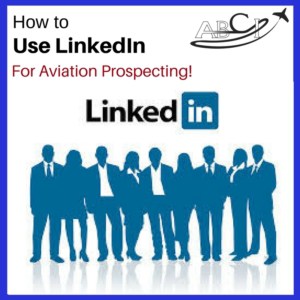 John Williams: And I’m John Williams.
John Williams: And I’m John Williams.
Paula Williams: And we are ABCI. And ABCI’s mission is-
John Williams: As you all know that have been listening, to help you guys sell more stuff in the aviation industry.
Paula Williams: Correct, well this might be the first time somebody hears one of our podcasts. So you never know.
John Williams: Yeah, I suppose.
Paula Williams: [LAUGH] Right. Now we do have a hashtag, and that is #AvGeekMarketing, A-V Geek G-E-E-K Marketing, and we will reply to every tweet. So if you have questions, comments, anything you’d like to discuss about anything we’re talking about today or on any of our other podcasts or webinars or anything else, we would be happy to discuss that with you on social media.
So now what happens a lot in aviation marketing is you have a list of companies that you’d like to do business with, and we recommend having a really good top ten list of companies that are like your current customers. The ones that you really enjoy working with, that you find very profitable, and that you work really well with.
Finding more companies that match those demographics, so geography, company size, type of company, type of aircraft, type of size of fleet, organization of the company. There’s lots of things that can go into that. So you’ve worked out your top ten list of companies that you really want to work with, right?
John Williams: Yep, well you should have.
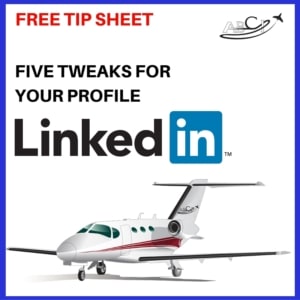 Paula Williams: You should have, exactly. So we’re assuming that you have done that. If you haven’t done that, then you can put this on pause [LAUGH].
Paula Williams: You should have, exactly. So we’re assuming that you have done that. If you haven’t done that, then you can put this on pause [LAUGH].
John Williams: Right.
Paula Williams: And go do that, or you can listen to this at a later time when you actually do have a top ten list of companies that you want to research.
We’ll wait. If we’re back, then we assume that you already have that and you’re ready to go. So this is actually kind of a tutorial today. We are going to have this as a video and we’ll have the slides available online, so if you want to look at the slides you can do that.
But we’ll try to make this very descriptive visually, so if you’re just listening to this at the gym, or in your car or whatever, you’ll be able to do this later. It’s not that hard, right? Okay, so what you need is a list of individual decision makers from those top ten companies with their contact information so that you can perform specific sales and marketing activities like sales calls, right?
John Williams: Which is the ultimate goal is to make the call and sell the product.
Paula Williams: Exactly, so we don’t sell things to companies, we sell things to human beings. Humans make the decisions about what they’re going to buy.
John Williams: Yeah, companies don’t.
Paula Williams: Yeah, companies don’t buy things, people buy things.
And so, if you were to send even a really fantastic marketing package to a company, care of whoever’s in charge of whatever department it is, it’s just going to sit in the mail room. You really do need to narrow this down to the specific person that’s going to make the buying decision.
And that’s what we’re talking about today is how to take that top 10 list of companies and get it down to a top 10 or top 20 list of individual human beings, right?
John Williams: Yes.
Paula Williams: Okay, so the best place to find human beings in the aviation industry is.
John Williams: LinkedIn.
Paula Williams: LinkedIn, exactly, and why is that?
John Williams: I don’t know, why is that?
Paula Williams: Well, why do you use LinkedIn even though you don’t use anything else?
John Williams: Well, I didn’t to start with when LinkedIn first came out. But it was after listening to folks talk about how it could be used and then I decided to join up and ultimately used it that way.
Paula Williams: Right, we do a social media survey every year, and every year LinkedIn comes in as the number one most used social media, and the number one most believed social media by aviation professionals. And the decision makers in the aviation industry tend to be the demographics that use LinkedIn.
So a lot of them are college educated, former military, male [LAUGH] over 40, lots of different demographics that if you look at the demographics of the different social media, you’ll find it fits LinkedIn pretty well. And LinkedIn has a reputation for being business-like, less spammy, less of a waste of time than the other social media.
I’ve actually had people [LAUGH] in conventions, some older gentlemen in the aviation industry say, I am not going to do Facebook and I’m not going to do Twitter because I don’t care what people had for breakfast. And that’s just a reputation that some of the other social media have. But LinkedIn has somehow managed to be separate from that.
John Williams: Yes, and on top of that, I would encourage you to also put a current picture of yourself when you’re out there. And the reason is because when you meet people, people do research. And if you’re going to meet somebody you haven’t met before, they can see what you look like and know when you walk into the same room, who you are and how to go say hi, my name is, glad to meet you.
Paula Williams: Right, exactly, and networking is a topic that we might want to do another podcast about.
John Williams: Well, it’s about networking, but that’s not what I’m talking about. I’m talking about you put the picture on there so that when you do go to meet somebody to make a sales call, you already know what they look like and you know you’re talking to the right guy.
Paula Williams: Exactly, so today we’re talking about research using LinkedIn. And so, the first thing that we recommend is that you look up the company. Now most of us are familiar with individual profiles on LinkedIn. And we all have, most of us anyway, I think something like 90 something percent of the folks in the aviation industry have a profile on LinkedIn.
But today, we’re going to talk about starting with a company record. And this is something that not a lot of people use, but it’s pretty powerful and we’ll tell you why. So there’s a pull down menu in LinkedIn, so that you can change from whether you’re looking for an individual or looking for a company.
So you have a list of ten companies. So what you want to do is switch that little toggle to Company and then type in the company name. And what’s going to come up is a list of companies, right, as opposed to a list of humans. So we’re starting with what we have and going toward what we want, right?
John Williams: Mm-hm.
Paula Williams: Okay, so you put in the name of the company. In this case we put in VietJetAir, and came up with the company. So the company page in LinkedIn is something that we recommend that everybody have. Most of the larger companies in the aviation industry do already have them.
There are few that don’t, whether they’re official or not. If any of their employees are listing that is a company, then LinkedIn will set up a page for that. And in the upper right of this company page, there’s going to be a little section that shows how you’re connected to that company.
And it shows all of the employees at that company that you’re connected to and to what degree you’re connected to them. So you might have some first degree, second degree, people who you’re in the same group with and other kinds of things, that you have similarities with on LinkedIn.
So how you’re connected in the upper right has a little link that’s hard to see [LAUGH] and basically it says See all, and it’s in that upper right section of how you’re connected. And if you say See all, then you get to see a list of employees at that company with their titles and-
John Williams: Their picture.
Paula Williams: Their picture, thank you very much. And a little bit of information about how you’re connected, how many shared contacts you have, how many shared groups you have, other kinds of things like that. So your top ten list of companies, your goal for today [LAUGH] is to go through and expand your network within those companies.
So, what I want to do is I want to look for people who have a title that looks like that would be a decision maker in the part of the company that I want to do business with. So if I’m selling a product that has to do with training, as an example, then I’m going to look for people who have a title like training manager, something like that, and I’m going to try and connect with them.
And if I’m a first or second degree connection, of course, I can already make contact with them just by hitting the Connect button. If they’re a third degree or further contact, then I have two choices, right? One is to upgrade my LinkedIn account to a LinkedIn premium account and then send them what is called InMail, which allows me to contact pretty much anyone on LinkedIn.
And send them a little note that says hi, my name is and I do this, and I thought it would be a good idea to connect. The other way, and the way that I actually prefer, is to look for a way to connect not using that kind of a cold call approach.
And that is to find something that we have in common. Maybe we went to the same school. Maybe we belong to one of the same groups, and there’s a lot of aviation groups that are really helpful for this. And there’s lots of ways that I could find a way to connect this person to this person through my network already, or through a group, or some other way that seems more natural and that seems more authentic than using the premium account and paying money to LinkedIn and all that stuff, right?
John Williams: Whatever works, customers cost money.
Paula Williams: [LAUGH] Customers do cost money. And it is faster and more efficient, if you want to contact people directly, you can use a LinkedIn premium account. You just want to make sure that you don’t take the defaults on any of those messages because it just looks like canned spam, right?
You don’t want to look like a robot.
John Williams: No, not at all.
Paula Williams: Okay, so you go through that top ten list and you make some connections in each of those top ten companies, right? And this way you’re expanding your network, and not just you, but everybody in your company that you can persuade to do this.
You should have them do the same thing because if your network, your company has a big number of connections to people in their company, then that’s always a good thing. You have more lines of communication open, you have more people that know of each other at least, and so on.
So if you can get all your sales guys, all your customer service guys, all your managers, drive everybody crazy til they do this, right?
John Williams: Mm-hm.
Paula Williams: Okay then, so you’ve done all this and then one week later, and we do this on Fridays, follow Fridays, it’s kind of what we do.
We go back to the company and look at this How You’re Connected list. You should have a larger network in that company. And you can also go specifically to all of those first degree connections that you have worked so hard to get, everybody who’s accepted your invitations. And then there’s a little grey Contact Info tab that you can click on their LinkedIn profile that gives you whatever they’ve put in there.
And that might be an email address, sometimes they’ll put a phone number in there, postal address, a Twitter link, certainly a link to their LinkedIn profile and so on. And what do you do with that information?
John Williams: Use it.
Paula Williams: [LAUGH] You put it in your CRM [LAUGH], your contact relationship management database, or your spreadsheet or whatever it is that you’re using, and you plan a sales call to this person that you have worked so hard to get in touch with.
And the first conversation will probably be a casual one. Something along the lines of I’m calling because it looks like you’re in charge of this department and I have something that may be of interest to you. When do you have 20 minutes to talk about it, or are you even the right person?
In some cases, they may refer you to someone else in the company. So that first conversation should be a very casual one, and not about selling anything, just about getting to know if you’re even talking to the right person and, if not, that’s fine too. It’s always good to expand your network.
John Williams: Yep, plus maybe they can tell you who the right person should be.
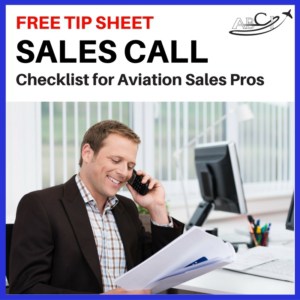 Paula Williams: Absolutely, right, okay, so download the sales call checklist and that is available from ABCI1.com/SalesCalls. And that gives you the precise checklist of what I say [LAUGH], or pretty close to what I say when I’m on sales calls.
Paula Williams: Absolutely, right, okay, so download the sales call checklist and that is available from ABCI1.com/SalesCalls. And that gives you the precise checklist of what I say [LAUGH], or pretty close to what I say when I’m on sales calls.
And how I go about making that a lot less unpleasant for everybody involved and a lot more effective. And we actually do make a lot more sales than we used to via calls since I’ve been using this. And I used to feel really, really anti-scripting, but I found that the more I’m prepared for a call, the more comfortable I am, the more comfortable the other person is.
And the more I feel free to respond as needed to the other person because I’ve got options for everything, right?
John Williams: What do you mean by scripting?
Paula Williams: Well, an outline at least, and has thought through here are the questions they might ask me and here’s an answer.
John Williams: There are many definitions for that term so I just thought I’d ask.
Paula Williams: Yeah, I know, it drives me crazy too when people just read from a piece of paper.
John Williams: You don’t want to do that.
Paula Williams: No, yeah, you want to get the sales calls checklist, fill it out and use it, but don’t read from it precisely.
The preparation definitely shows in the quality of your communication, right?
John Williams: Yes.
Paula Williams: All right, okay, so that is available for you for free. And you may also want to see three ways to build your prospect list. Episode 3, three ways to improve your offers. Episode 4, prospecting calls to action and list building, Episode 12.
And also, the episode just before this one, which was three things not to do on a sales call [LAUGH] and that was episode 48. So thank you for joining us, and please do subscribe to our podcast, Go Forth and Sell More Stuff.
John Williams: America needs the business and we really do.
Paula Williams: [LAUGH] Absolutely. So we are on iTunes Stitcher and Google Play, so please do subscribe and do leave us a review. We’ll see you next week.
More Articles about Aviation Prospecting
AMHF 0011 – Advertising and Prospecting Basics
AMHF 0012 – Prospecting, Calls to Action & Lead Magnets
AMHF 0013 – 6 Prospecting Methods Using Aviation Digital Marketing
AMHF 0014 – Four Traditional Prospecting Methods
AMHF 0049 – How to Use LinkedIn for Prospecting in Aviation
AMHF 0050 – Power Prospecting – Aviation Marketing Book Club Discussion
Eight-Step, Never Fail Aviation Prospecting Method
This course was adapted from our Podcast, and enhanced with templates and worksheets. We’re offering it free for a limited time.
Why did we build this eight-step, fifteen-day prospecting campaign?
Because you have leads. (Or at least partial leads) But what you really need to sell more products and services is to book consultations.
We built this process from four sources:
- Our own practice (hence the examples!)
- Predictable Prospecting – How to Radically Increase Your B2B Pipeline by Marylou Tyler and Jeremy Donovan
- Magnetic Marketing by Dan S. Kennedy
- Email It! A Sellers Guide to Emails that Work by Bill Caskey
..[/fusion_builder_column][/fusion_builder_row][/fusion_builder_container]
Podcast: Play in new window | Download
Subscribe: Google Podcasts | Spotify | Amazon Music | RSS

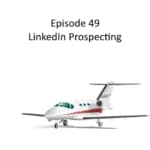

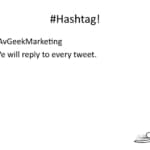
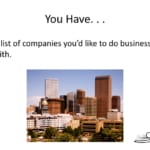


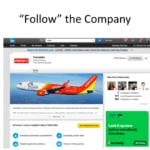
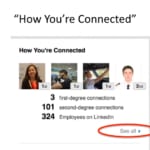
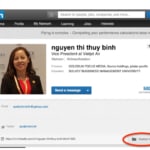
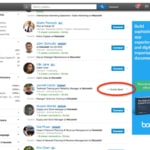

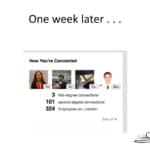

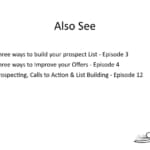
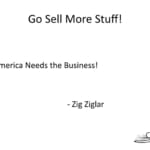







[…] Williams: Then we connect with Frank on LinkedIn, right? Because of course, we want to let him know who we are and let him know that we’re […]
[…] So when I get to the phone with them, I can figure out what tip sheet they were after, and talk to them about that particular piece of information. All right, another thing is LinkedIn, and we talked about this, touched on this just briefly, but we also have a tip sheet for LinkedIn prospecting. […]
[…] I love this one. I’ve actually taken this advice at least once already. Picked a fight on LinkedIn. A gentleman told me that one of my posts was too […]
[…] AMHF 0049 – How to Use LinkedIn for Prospecting in Aviation […]
[…] that you can do presenting your offer, we like to offer Lead Magnets via social media. So you can meet somebody via LinkedIn, when you send your first email to them, you can send them a message and say you know we have this […]
[…] Paula Williams: No kidding? Exactly, but if you want to know how to use LinkedIn for prospecting. […]
[…] the local social media favorites, plus some familiar international platforms like Linkedin and Facebook, we can come up with a strategy for each country you want to do business […]
[…] does use LinkedIn, sorry. [LAUGH] Slander, my goodness. John does not use Facebook, but he does use LinkedIn, […]
Great information!! Very helpful and effective post. thank you for share!